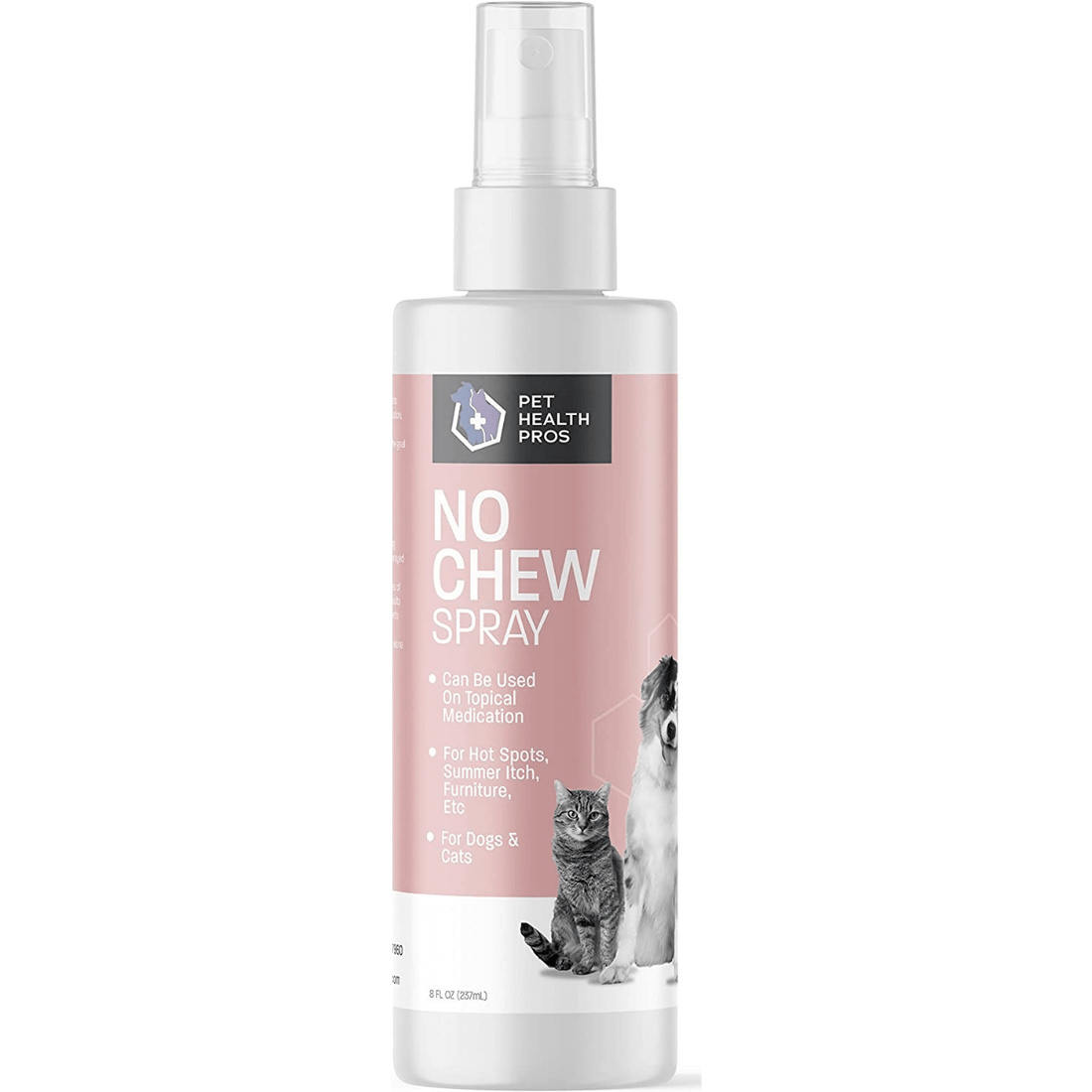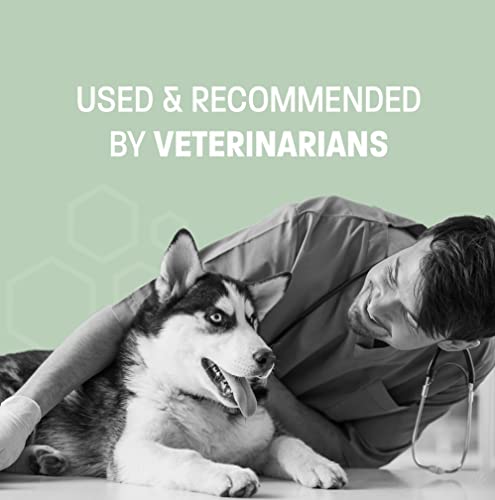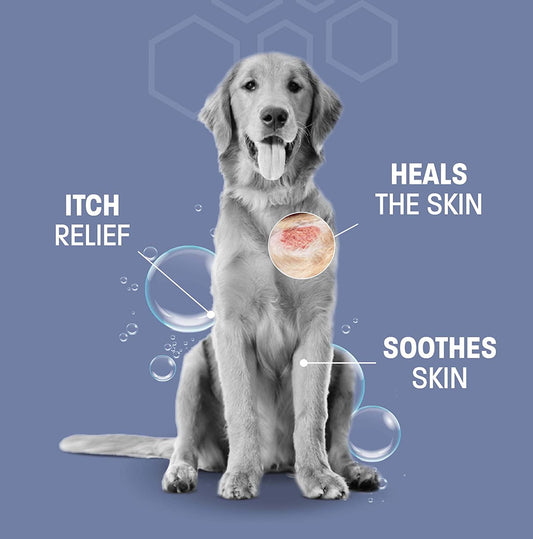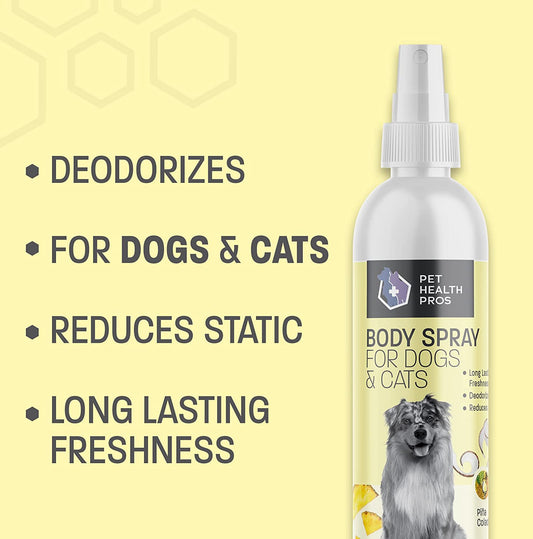Pets have a knack for chewing on things they shouldn't. From furniture to shoes and cords, they can create havoc in the house. That's where no chew spray comes in! This article gives guidance on using the spray in problem areas.
- Identify where they usually chew. Apply the spray generously in those spots. The bitter taste will make them stay away from furniture and table legs.
- To protect shoes, apply a light coat of spray to all sides. Reapply it every so often, as it may wear off.
- Cords are both dangerous and an annoyance. Spray along the length of cords and around your pet.
Pro Tip: Be consistent when using the spray. Observe how your pet reacts. If needed, consult your vet for advice on why they are chewing.
By following these tips, you can train your pet without harsh measures. With patience, both you and your furry friend can live happily without chewed furniture, shoes, and cords!
Understanding the Problem Areas
Pets have a tendency to chew on stuff around the house, which can cause damage and be harmful. To stop this, it's important to identify problem areas. This way, owners can take targeted measures to protect furniture, shoes, and cords.
Let's look at the objects that pets often chew on:
- Furniture (sofas, chairs, tables - anything with fabric!)
- Shoes (sneakers, slippers, heels - beware!)
- Cords (electrical and cables - a tempting threat!)
These problem areas may vary based on the layout of the space and the pet's habits. So, owners need to evaluate their own environment and determine what needs extra protection.
Also, pets often focus on objects that have familiar scents or those they link to their owners. This means family members' items may be more attractive to pets. Knowing this, owners can anticipate potential problem areas and take preventive measures.
Fun fact: 10% of dogs have pica (the consumption of non-food items) at some point!
Say goodbye to your pet's destructive chewing woes with no chew sprays! These revolutionary sprays are your key to safeguarding your cherished possessions.
No chew sprays work by emitting a bitter taste and unpleasant smell. This invisible barrier deters pets from biting or gnawing on items around the house.
To make the most of this pet-friendly product, identify the problem areas where your furry friends usually chew. Apply the spray to surfaces like furniture legs or shoe soles, as well as cords and cables for safety.
Consistently reapply the spray as needed. Pets may be persistent in their behavior, especially during anxiety-filled times. Utilize the spray on vulnerable items throughout your home to create a consistent deterrent.
Invest in the power of no chew sprays now! Save yourself from expensive repairs, and keep your possessions intact. Prevention is always better than restoration - protect your home with this simple yet highly effective pet deterrent solution.
Choosing the Right No Chew Spray
Picking the ideal no chew spray is critical when it comes to guarding your furniture, shoes, and cords from your pet's chewing habits. To aid you in making a wise decision, here are some significant factors to ponder.
Think about the kind of surface or material your pet likes to chew on. Different sprays are made to be useful for certain surfaces. For example, if your pet usually chews on wooden furniture, search for a spray created particularly for wood.
Another major factor is the ingredients used in the spray. Make sure to pick a product that's safe for you and your pet. Search for organic ingredients like bitter apple or lemon that put off pets from chewing without hurting them.
The strength of the chew deterrent is also something to think about. Some sprays have a stronger smell or taste than others, which can help keep your pet away more effectively. It may be helpful to try out different sprays to find the one that works best for your furry companion.
Now let me tell you a real story about how selecting the right no chew spray made a significant difference for one pet owner. Sarah was consistently vexed by her dog's behavior of chewing through electrical cords in the house. She tried multiple sprays but none seemed to work. Eventually, she discovered a no chew spray designed for cords and made a decision to give it a shot. To her joy, her dog immediately stopped chewing on the cords and hasn't touched them since.
By pondering these factors and picking the right no chew spray tailored to your precise trouble spots, you can successfully defend your possessions from your pet's chewing habits while keeping them safe and content.
Preparing the Problem Areas
Pets' chewing can be a hassle, but there are ways to help. Four steps that will get you there:
- See what they like: Check which areas your pet chews the most. From furniture to shoes and cords - know their preferences.
- Get rid of temptation: Put away items that might attract them. Store shoes in closed closets, cover furniture, and use cord organizers to hide cables.
- Apply no-chew spray: Once the temptation is gone, spray the problem areas with a pet-safe product specifically made to stop chewing.
- Reapply: Pets may get used to it over time, so keep reapplying as directed on the label or when you notice they start chewing again.
These steps will let you prepare problem areas and discourage undesirable chewing habits. Training your pet using positive reinforcement techniques and redirecting their attention away from destructive habits could be helpful, too.
Fun fact: A study by The American Veterinary Medical Association (AVMA) found excessive chewing in pets can be linked to boredom or anxiety disorders.
Applying No Chew Spray
No chew sprays can help in problem areas around the house that pets tend to chew. Here's how to use them:
- Locate the problem spots - Furniture corners, shoe racks, and cords that your pet is attracted to.
- Clean the surfaces - Remove any existing chewing marks or residue before applying the spray.
- Shake and spray - Shake the bottle and spray a thin, even layer of the no chew solution.
- Monitor and reapply - Monitor your pet's behavior and reapply if necessary.
- Alternative solutions - Provide alternate items like chew toys or scratching posts.
Additional tips:
- Don't spray onto fur or skin.
- Test a small area before treating large surfaces.
- Don't rely only on the spray. Use it as part of a comprehensive approach.
Using no chew spray along with other interventions can help protect furniture, shoes, and cords. Plus, it encourages healthier chewing habits in your furry friend.
Monitoring and Reapplying
Monitoring and Reapplying
Pets are inquisitive. Even with the best intentions, they could go back to areas which have not been sprayed with no chew spray. To gain the desired result, one must monitor and reapply the spray regularly.
A 3-Step Guide to Monitoring and Reapplying:
- Keep an eye out: Regularly inspect areas where pets tend to chew, such as furniture corners, shoe racks, and electrical cords.
- Look for signs of chewing: Check for bite marks or frayed edges in these places. If any damage is found, the spray needs to be reapplied.
- Be consistent with reapplication: Follow the manufacturer's instructions on how often to reapply. Generally, it is advised to reapply every few days or as needed.
Other tips for success:
Every pet may have different chewing habits, so it is essential to adapt the monitoring and reapplication routine. Also, be aware of new areas of interest or spots where your pet tries to bypass the spray. Being vigilant and proactive will make the no chew spray more effective in problem areas.
Stay alert!
To keep your furry friend safe, always monitor and reapply no chew spray. This prevents damage and potential harm to your beloved pet. Don't miss out on this important step in creating a secure space for both you and your pet!
Additional Measures to Prevent Chewing
Many pet owners know the frustration of furniture, shoes, or cords being chewed by their pets. To stop this, no chew sprays can be used. As well as this, there are other measures to take.
- Give them Chew Toys: Pets often chew because they're bored or stressed. Giving them chew toys helps direct them to the right things.
- Use Anti-Chew Sprays: As well as no chew sprays, anti-chew sprays can be applied to problem areas. These have a bitter taste which pets don't like.
- Stimulate their Environment: Pets may chew if they don't have enough exercise or mental stimulation. Make sure they've got plenty of playtime and interactive toys.
To further stop the chewing, it's important to understand why they do it. It may be due to anxiety or fear, so positive reinforcement and professional help can help.
It's vital to be consistent with training. Follow through with no chew sprays and other measures until your pet knows what is and isn't allowed. Be patient and don't use punishment.
By using no chew sprays, chew toys, anti-chew sprays, and a stimulating environment, you can stop pets from chewing your belongings. Understand why they chew, be consistent with training, and with time and patience they'll learn appropriate habits.
Conclusion
Targeted use of pet no chew spray can be effective in preventing pets from chewing furniture, shoes, and cords. Apply it to problem areas in the house to deter furry friends from destructive habits.
Furniture like couches, chairs, and table legs are often chewed on by pets. Spray generous amounts of no chew spray on these surfaces. The bitter taste and strong smell will discourage them from biting.
Shoes are an easy target for chewing. Spritz some no chew spray onto them before leaving them unattended. The unpleasant taste will discourage your pet from turning them into chew toys.
Cords need protection too. Apply no chew spray along the length of the cords. This will deter your pet and keep them safe.
Excessive chewing could be a sign of anxiety or boredom. No chew sprays can help by diverting attention away from destructive habits and promoting healthier alternatives.
Frequently Asked Questions
1. How does pet No Chew Spray work?
Answer: Pet No Chew Spray is formulated with a bitter taste that is unpleasant to pets. When sprayed on furniture, shoes, cords, or any other problem areas, it deters pets from chewing on these items.
2. Is pet No Chew Spray safe for my pets?
Answer: Yes, pet No Chew Spray is safe for pets when used as directed. It is designed to deter chewing behavior without causing harm to animals. However, it is always recommended to test a small area before applying it to larger surfaces.
3. Which problem areas in my house can I use pet No Chew Spray on?
Answer: Pet No Chew Spray can be used on a variety of problem areas where pets tend to chew, such as furniture legs, shoe edges, electrical cords, baseboards, and curtains. However, avoid using it on surfaces that may be affected by the spray, such as leather or delicate fabrics.
4. How often should I apply pet No Chew Spray?
Answer: The frequency of application depends on your pet's behavior. For persistent chewers, apply the spray daily until the chewing behavior stops. If your pet shows signs of rechewing, reapply as needed. In some cases, pets may require more frequent applications initially.
5. Can I use pet No Chew Spray on open wounds or sore areas?
Answer: No, pet No Chew Spray should not be used on open wounds or sore areas. It is intended for application on items and surfaces only. If your pet has any injuries or irritations, consult a veterinarian for suitable solutions.
6. Can I use pet No Chew Spray as a training aid?
Answer: Yes, pet No Chew Spray can be used as a training aid to discourage chewing behavior. When your pet attempts to chew on inappropriate items, redirect their attention and immediately spray the desired surface with the no chew spray. This helps associate the bitter taste with the unwanted behavior, promoting a positive training experience.









